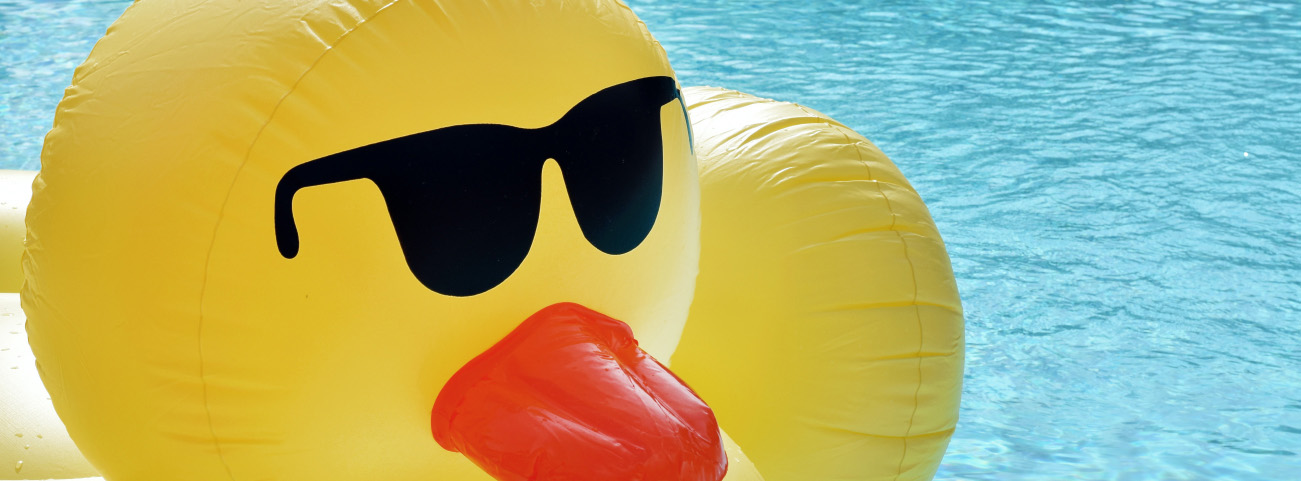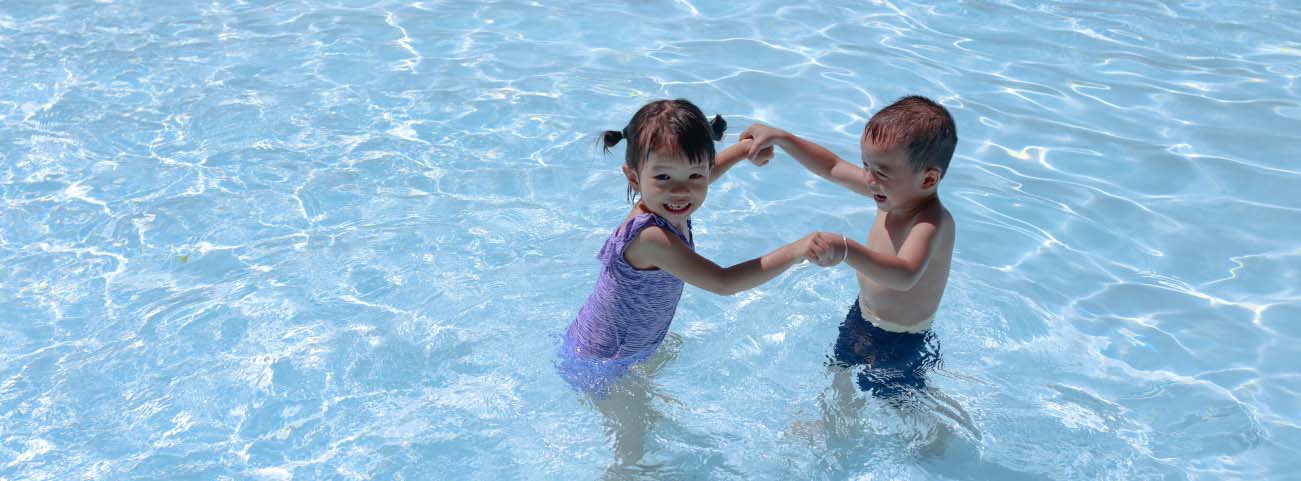How To Remove And Prevent Scale In The Pool If You Live In A Hard Water Area
If the area you live in has hard water, then you may need to deal with calcium scales in your pool. There are a few ways you can get rid of calcium scales from your fibreglass pool, depending on where the scale formed from.

There are three basic ways you can get rid of scales from your fibreglass pool. These include:
- Muriatic Acid: Very effective at removing scales, and can prevent them from coming back as well.
- White Vinegar: Best for calcium scales that have firmed on tiles. First, you’ll need to lower the level of water in your pool.
- Pumice Stone: If there are calcium scales on the plaster, then a pumice stone should be used to remove it.
Note that calcium scales can cause real damage to your fibreglass pool if it isn’t removed in time. This is why you need to ensure that you get rid of calcium scales as soon as you spot them.
What do you need to get rid of calcium scales?
You’ll need to have the following, to get rid of calcium scales from your fibreglass pool:
- Pool brush
- Calcium scale remover
- Brush with stiff bristles
- Putty knife

What are calcium scales?
Calcium scales are sometimes also known as limescale. They look like a white chalk-like substance, which can usually be found on machinery that is used to operate the pool. It especially tends to gather on the metallic parts of that machinery. You can also notice calcium scales building up on the plaster as well as the tiles if you deal with hard water in your area
This kind of calcium scaling appears to be a white foam that forms around the pool’s water line. This foam-like substance can become hard, should it be left untreated. Once it becomes hard, it’s extremely difficult to remove. These calcium scales can also end up clogging the pool filter, coating the pool pipes, and more. It can even start to erode the materials that are located underneath it. These include pool tiles, pool liners, fibreglass, and more. It also leaves behind stains, should it be left untreated.
What are the different types of calcium scales?
There are two types of calcium scales that you should know about. These include:
- Calcium Carbonate: This can be caused by an imbalance in the pH chemical level of your pool. If the pH level is too high, then calcium carbonate can be converted into its scale form.
- Calcium Silicate: This type of calcium scale is harder to get rid of. It’s more greyish in appearance than calcium carbonate and is also caused by the high pH level of the water.
How can you prevent calcium scales from being formed in your pool water?
Getting rid of calcium scales is difficult. This is why you should strive to ensure that they aren’t formed in the first place. You can do this by:
- Ensuring that the pH level of your pool stays between 7.2 and 7.4.
- Ensuring that the level of alkalinity in your pool is between 80 and 90 ppm.
- You can use a pool clarifier in order to clump calcium films in place. Then, use a vacuum to get rid of the calcium films. You can also leave your pool filter to handle this issue.
- Remember to regularly brush your pool, in order to prevent scales from forming.
- Vacuum the pool from time to time, especially after you brush the pool. This way, if there’s any loose calcium, then you’ll be able to get rid of it.

How can you remove calcium scale from your pool?
If you haven’t been able to prevent calcium scales from forming in your pool, then you’ll need to take on the arduous task of removing them. An effective way of getting rid of calcium scales from your pool is by using muriatic acid. Before you use muriatic acid, however, there are safety precautions that you should follow.
You’ll need to wear gloves, keep your goggles on, and also wear clothes that prevent the muriatic acid from coming in contact with your skin.
If you’re dealing with minor scaling, then using a solution of vinegar water is more than enough to get rid of it. Should the tiles in your pool be ceramic, then you’ll need to opt for a gentler cleaning solution as well. Don’t immediately consider acid-washing your pool.
If you want to remove the buildup of calcium on your pool tiles, then the first thing you’ll need to do is lower the water levels of the pool. This will enable you to work around the water line more effectively. Simply use a garden hose to remove water from your pool.
Then, use your scrub brush, together with a white vinegar solution, to work on removing the scales. Spray the white vinegar onto the part that you want to clean. Then, leave it for around twenty seconds. After this, use your brush to thoroughly scrub the area. In case the scale comes off, you can use the same method to clean the rest of your fibreglass pool as well. But in case this doesn’t happen, then you’ll need to consider acid washing your pool.
If you do find yourself needing to acid wash your pool, then you’ll need to get a bucket that can hold up to five gallons of water. In this bucket, mix around three parts of water with one part of acid. You’ll notice this mixture bubbling and emitting fumes as it interacts with the scale. Then, use a regular watering can to disperse the solution onto surfaces that have calcium scales built up on them. Try to apply the solution to smaller sections, as you work your way around the pool.
Conclusion
If you live in an area with hard water, then you’ll need to deal with calcium deposits from time to time. Calcium deposits can be hard to get rid of, which is why you should try to prevent them from forming in the first place. This guide helps you learn how to prevent calcium deposits from forming, and how to get rid of them if they do form.
How To Remove And Prevent Scale In The Pool If You Live In A Hard Water Area
If the area you live in has hard water, then you may need to deal with calcium scales in your pool. There are a few ways you can get rid of calcium scales from your fibreglass pool, depending on where the scale formed from.

There are three basic ways you can get rid of scales from your fibreglass pool. These include:
- Muriatic Acid: Very effective at removing scales, and can prevent them from coming back as well.
- White Vinegar: Best for calcium scales that have firmed on tiles. First, you’ll need to lower the level of water in your pool.
- Pumice Stone: If there are calcium scales on the plaster, then a pumice stone should be used to remove it.
Note that calcium scales can cause real damage to your fibreglass pool if it isn’t removed in time. This is why you need to ensure that you get rid of calcium scales as soon as you spot them.
What do you need to get rid of calcium scales?
You’ll need to have the following, to get rid of calcium scales from your fibreglass pool:
- Pool brush
- Calcium scale remover
- Brush with stiff bristles
- Putty knife

What are calcium scales?
Calcium scales are sometimes also known as limescale. They look like a white chalk-like substance, which can usually be found on machinery that is used to operate the pool. It especially tends to gather on the metallic parts of that machinery. You can also notice calcium scales building up on the plaster as well as the tiles if you deal with hard water in your area
This kind of calcium scaling appears to be a white foam that forms around the pool’s water line. This foam-like substance can become hard, should it be left untreated. Once it becomes hard, it’s extremely difficult to remove. These calcium scales can also end up clogging the pool filter, coating the pool pipes, and more. It can even start to erode the materials that are located underneath it. These include pool tiles, pool liners, fibreglass, and more. It also leaves behind stains, should it be left untreated.
What are the different types of calcium scales?
There are two types of calcium scales that you should know about. These include:
- Calcium Carbonate: This can be caused by an imbalance in the pH chemical level of your pool. If the pH level is too high, then calcium carbonate can be converted into its scale form.
- Calcium Silicate: This type of calcium scale is harder to get rid of. It’s more greyish in appearance than calcium carbonate and is also caused by the high pH level of the water.
How can you prevent calcium scales from being formed in your pool water?
Getting rid of calcium scales is difficult. This is why you should strive to ensure that they aren’t formed in the first place. You can do this by:
- Ensuring that the pH level of your pool stays between 7.2 and 7.4.
- Ensuring that the level of alkalinity in your pool is between 80 and 90 ppm.
- You can use a pool clarifier in order to clump calcium films in place. Then, use a vacuum to get rid of the calcium films. You can also leave your pool filter to handle this issue.
- Remember to regularly brush your pool, in order to prevent scales from forming.
- Vacuum the pool from time to time, especially after you brush the pool. This way, if there’s any loose calcium, then you’ll be able to get rid of it.

How can you remove calcium scale from your pool?
If you haven’t been able to prevent calcium scales from forming in your pool, then you’ll need to take on the arduous task of removing them. An effective way of getting rid of calcium scales from your pool is by using muriatic acid. Before you use muriatic acid, however, there are safety precautions that you should follow.
You’ll need to wear gloves, keep your goggles on, and also wear clothes that prevent the muriatic acid from coming in contact with your skin.
If you’re dealing with minor scaling, then using a solution of vinegar water is more than enough to get rid of it. Should the tiles in your pool be ceramic, then you’ll need to opt for a gentler cleaning solution as well. Don’t immediately consider acid-washing your pool.
If you want to remove the buildup of calcium on your pool tiles, then the first thing you’ll need to do is lower the water levels of the pool. This will enable you to work around the water line more effectively. Simply use a garden hose to remove water from your pool.
Then, use your scrub brush, together with a white vinegar solution, to work on removing the scales. Spray the white vinegar onto the part that you want to clean. Then, leave it for around twenty seconds. After this, use your brush to thoroughly scrub the area. In case the scale comes off, you can use the same method to clean the rest of your fibreglass pool as well. But in case this doesn’t happen, then you’ll need to consider acid washing your pool.
If you do find yourself needing to acid wash your pool, then you’ll need to get a bucket that can hold up to five gallons of water. In this bucket, mix around three parts of water with one part of acid. You’ll notice this mixture bubbling and emitting fumes as it interacts with the scale. Then, use a regular watering can to disperse the solution onto surfaces that have calcium scales built up on them. Try to apply the solution to smaller sections, as you work your way around the pool.
Conclusion
If you live in an area with hard water, then you’ll need to deal with calcium deposits from time to time. Calcium deposits can be hard to get rid of, which is why you should try to prevent them from forming in the first place. This guide helps you learn how to prevent calcium deposits from forming, and how to get rid of them if they do form.



